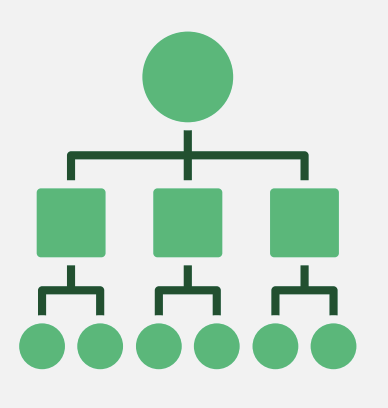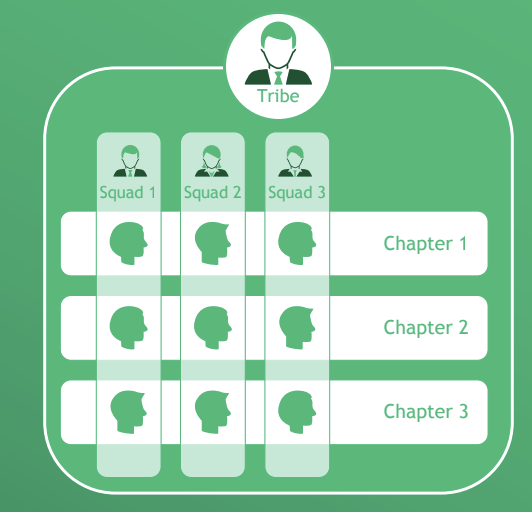An agile enterprise is a term applied to organizations that are quick in responding to changes in the marketplace or environment. Agile enterprises focus on their customers’ needs — opting for customized offerings rather than standardized offerings.
Many companies struggle to understand what it means to be an agile enterprise. Many assume agility emerges as a result of implementing one of the various agile delivery methodologies. Adopting an agile delivery methodology is a key part of becoming an agile enterprise, but to become truly agile there is much more to consider. In this blog, we will outline some of the key traits and considerations, as well as business benefits that come as a result of becoming an agile organization.
Agility = stability + dynamism
A few years ago, McKinsey wrote about the concept of “false tradeoff” between the desire for speed and flexibility on the one hand and stability and scale on the other, arguing that successful enterprises combine both. Adopting the characteristics of a dynamic organization alongside the core stable business helps you avoid making a disruptive lurch towards a start-up mentality. By carefully and effectively combining the dynamic capabilities with a stable back bone, you pick up speed as well as control. However, while the McKinsey authors focused primarily on the organizational design impact, we have found that the most effective agile enterprises have additional common features that enable them to achieve a step change in their operation. At a top level these can be categorized as:
Stable back bone
Strategy is consistent direction set by top team:
- Shared vision and purpose
- Clear strategic guidance
Simple reporting structure as a base:
- Clear roles and structure, where stable functions are the home for experts
- Hands-on governance (doing, not talking)
Clearly defined ways of working:
- Standardized, digitized, and lean ways of working
- Performance transparency and follow up (Test and learn)
Culture holding the company together:
- Individual accountability and professionalism
- Cohesive culture and trust as the anchor
Dynamic capability
Fast reaction to changing circumstances:
- Sensing and seizing opportunities
- Rapid resource allocation
Supporting small, modular cells:
- Small, cross-functional, customer-focused, and end-to-end accountable cells, a clear mission, and decision autonomy
- Partnerships and external networks
Allowing fluid reconfiguration:
- Rapid experimentation and iteration, continuous improvement
- Knowledge and information sharing
Encourage entrepreneurship:
- Shared leadership
- Entrepreneurial drive and intrinsic motivation
To develop these features we need to think about the enterprise from top to bottom. We have broken this down into eight key areas which need to be rigorously addressed.
An organizational structure for the agile enterprise
Becoming an agile enterprise will have wide impacts across a range of considerations beyond the implementation of an agile methodology. One of the most visible (and challenging) manifestations of a successful agile enterprise is the actual organizational structure that needs to emerge.

Traditional organization structure
The traditional organization is broken down into functional silos and is usually regional and/or product-orientated. There are multiple layers within the organization with decision making held in senior places (which can lead to bottlenecks moving forward). There are generally small spans of control.

Agile organization structure
Most agile methodologies emphasize the idea of squads or scrum teams as the fundamental organizational component. These are typically cross-functional teams that are customer and/or product-oriented. As the number of squads increases beyond one, an overall structure of the organization emerges which is flatter with teams often (but not always) being seen as temporary structures rather than static. As a whole, there is a much wider span of control and a much more distributed and autonomous approach to decision making.

What is the right organization structure for the agile enterprise?
This is a complex and controversial subject. Options range from the formalized scaled agile frameworks like SAFe, LeSS, and Disciplined Agile (DA) to the “models” inspired by the approaches adopted at organizations like Spotify, Amazon, and Netflix. In reality, there is no single “right” way to best organize the agile enterprise but we will make some suggestions to consider:
Team size: It is almost universally agreed that the most productive delivery construct is the legendary Bezos two-pizza team of 5-7 people. This approach maximizes productivity from face-to-face work. But you also have to throw into the mix the realities of co-location are not always possible, feature breakdowns don’t always align neatly with this size of team and the challenges of finding full-stack developers. The key objective here is being cognizant of team size and working to keep them as close as possible to the optimum target size.
Full stack vs. specialists: Everyone wants teams of multi-skilled developers who can test and vice versa, but not everyone can afford or attract them. Specialization leads to hand-offs, but it can also drive economies of scale and efficiency. Your organization needs to find a balance between the two.
Autonomy vs. command: Equally controversial — pure agilists sometimes argue that the job of management is to get out of the way of the practitioners and let them self-organize and find the optimum approach. This may or may not work. With 10 self-organizing teams, you are going to get various ways of working — and that is almost certainly undesirable. Again, there is a balance to be struck.
What are the benefits of driving an agile enterprise shift?
The overall benefits case will be specific to each organization and can cover many areas. The following are some sample areas to help get some ideas flowing:
Direct financial benefits:
- Efficiency gains: These gains come from eliminating waste and reducing PMO and middle management.
- Pilot value delivery: Highly dependent on selected pilots, examples include return on new proposition launch, performance.
Time to market improvements from agile:
- Acceleration of digital pipeline: Agile enables much faster delivery of digital initiatives and propositions already in the pipeline.
- Revenues beyond core at a new level: Agile is key for organizations developing new businesses and propositions with partners.
- Increase competitiveness in core: Agile differentiates organizations through customer experience and propositions through that defend/gain market share.
Intangible benefits
- Attracting new talent: New employee engagement and workplace improvements attracts new and talented workers.
At MuleSoft, we have an in-house strategic advisory team who are here to help customers adjust to the new normal. They are a collection of industry leaders with experience way beyond integration technology. We can help you plan, justify and execute your business transformation across people, process and technical capabilities.
Please get in touch if you would like to talk to us about how we could help. For more information on how to develop your API strategy, see our API strategy best practices resources.









